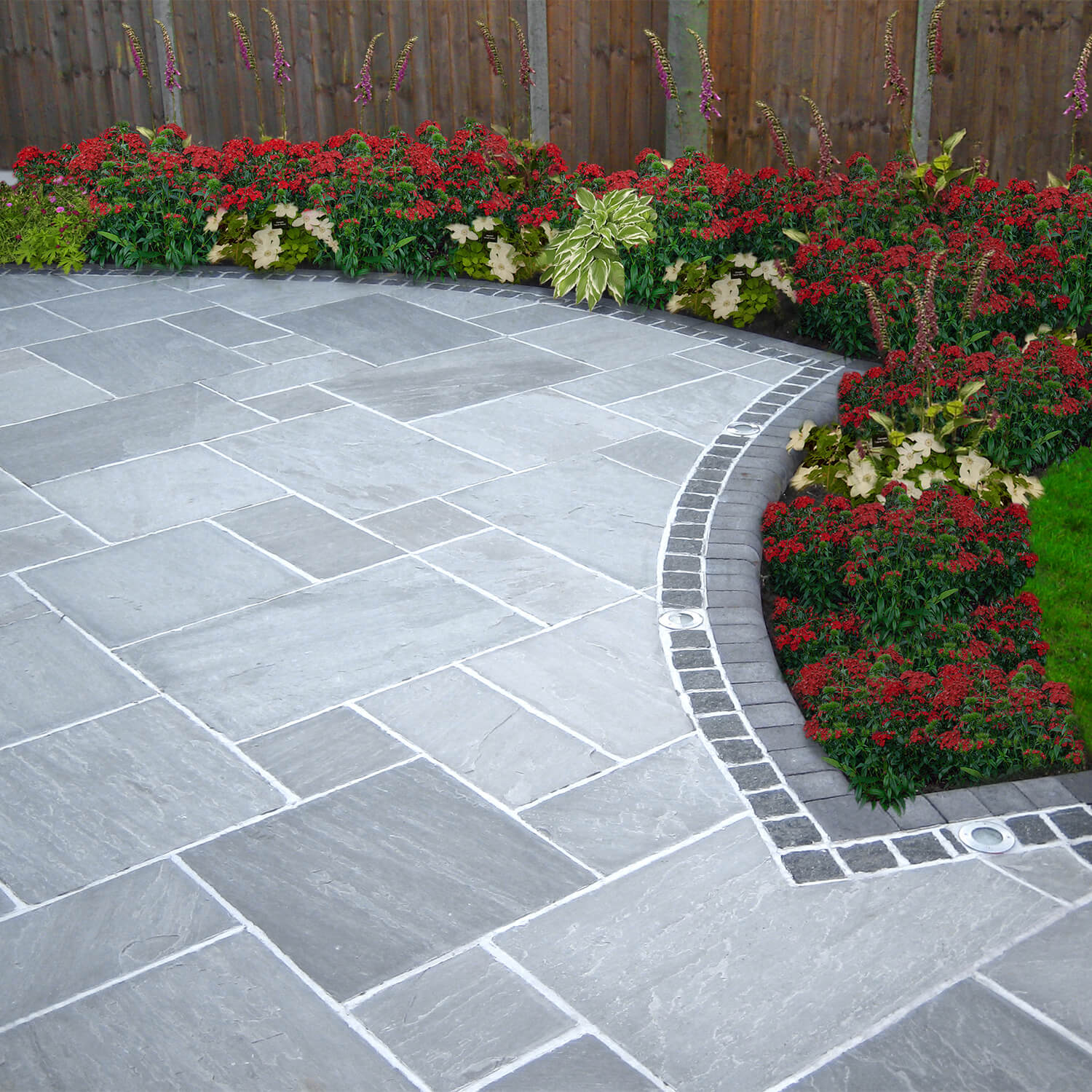Who hasn’t been spending more time in their garden? Whether it’s for a socially distant get together or to flex those green fingers. Even if the Covid-19 pandemic had never come on the scene, our gardens were already transforming into something more like an extension to the home with areas for dining, entertaining and cooking. With this multifunctionality comes the need to divide the garden into ‘areas’ hence the importance of paving. Of course if money is no object you can pave your garden with the most beautiful, durable natural stone on the market but many of us have to stick to a budget and if that’s a bit on the small side then how can you achieve a great look without breaking the bank?
What options of paving are there?
Concrete is the go-to for cheaper end paving as you can choose from a variety of different colours, styles, textures, and even sizes of concrete slabs. Concrete is the perfect material if you want to ‘get the look’ for example, it can be made to look like brick on a driveway or you can use larger slabs for a clean, contemporary look. But don’t think that natural stone is out of your reach if you are working to a budget. Despite the fact that it is a fantastic quality, sandstone paving prices are surprisingly low, which means you can create your dream garden for a fraction of the cost of other types of natural stone paving.
What are the alternatives to paving?
A cheap alternative to paving is asphalt. It is more resistant to cold weather and is less expensive to repair but concrete is far more hard wearing.
For driveways you can use gravel which is also a good alternative if you have problems with drainage. You could keep costs down by using pavers to edge the drive or pathway, And for a more stable path choose sharp-edged gravel that is labelled 1/4-inch minus. Pieces of that gravel type fit snugly together as they won’t move about so much.
Another cost-conscious alternative is poured concrete, although if you suddenly have more money to spend and want to invest in stone pavers instead it’s quite difficult to remove.
For patios the popular alternative is decking but this can be more expensive than say, sandstone and not as easy to maintain.
Why should you choose paving for your outdoor space?
Even though paving is a little more costly than some alternatives it is generally more hard wearing, better looking and will have more longevity. Sandstone looks better as it ages and most natural stone pavers are easy to work with.
How to choose the right paving
Budget is important, especially if you have a huge project that is going to be used a lot. In that case it’s perhaps prudent to consider how much it will cost in the long term. Sometimes spending more at the outset will save you money over time.
When choosing your paving you need to ask yourself what will be its main purpose. Is it for driveway, patio, a garden path, or a poolscape? The type of paving you choose will also depend upon where it’s going to sit within your garden. Will it get a hammering from the elements? Or be at risk of oil drips from motor vehicles?
Finally, the style of your home may dictate your choice. The type of paving you choose for a modern build will certainly be different from a rural property, although there are no rules. A chic contemporary patio can look great juxtaposed against an older property.
For more information about the range of natural stone paving we provide, visit our shop. Alternatively, got a question? Please do not hesitate to get in touch.








